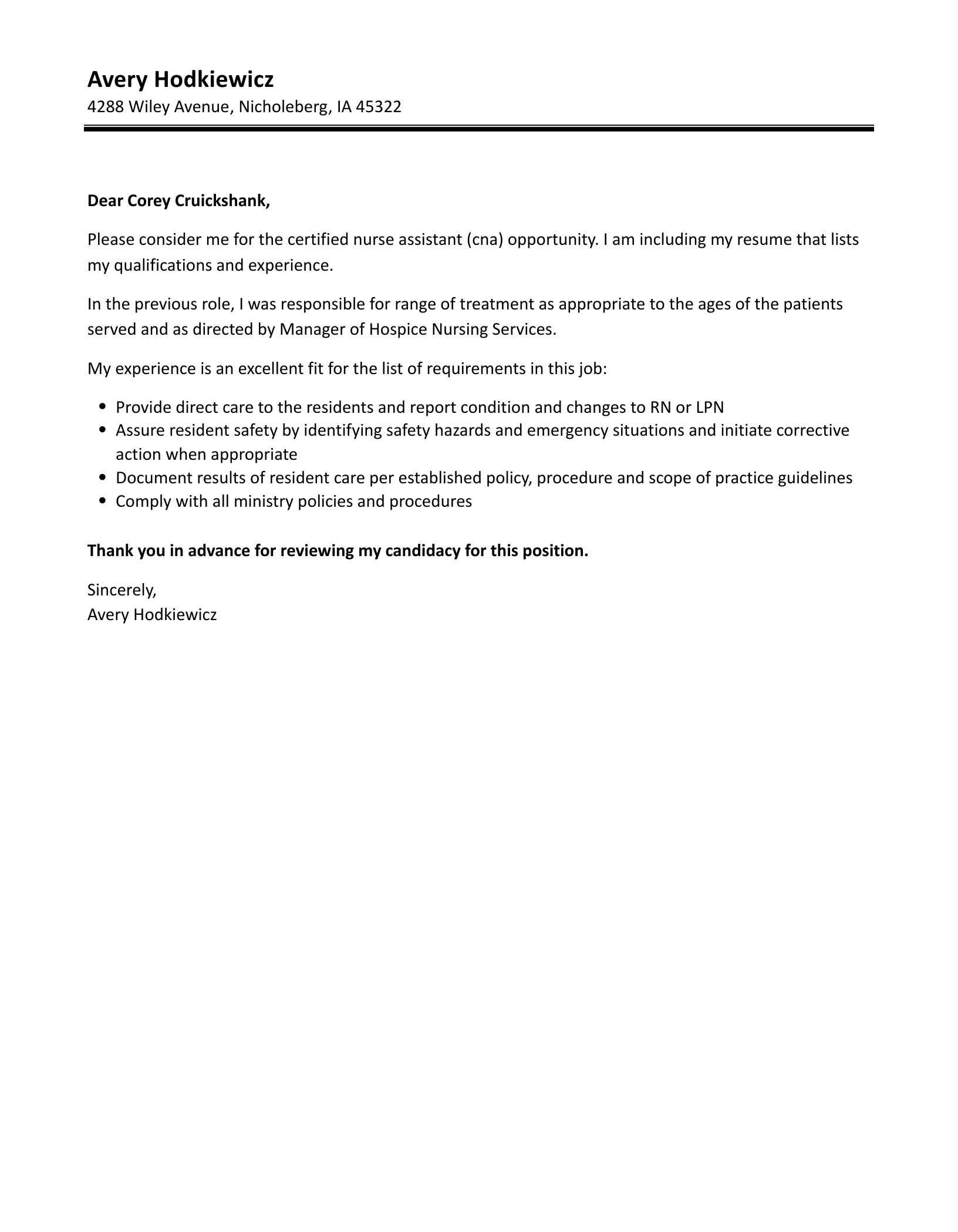Crafting a Compelling CNA Cover Letter
A certified nursing assistant (CNA) cover letter is more than just a formality; it’s your first impression on a potential employer. It’s your chance to showcase your skills, experience, and personality, making a strong case for why you’re the ideal candidate for the job. A well-crafted cover letter complements your resume, providing a deeper understanding of your qualifications and demonstrating your genuine interest in the position. Without a strong cover letter, your application might be overlooked, potentially missing out on opportunities. This guide will help you create a compelling CNA cover letter that captures the attention of hiring managers and increases your chances of landing an interview.
Understanding the Importance of a CNA Cover Letter
Why a Cover Letter is Essential
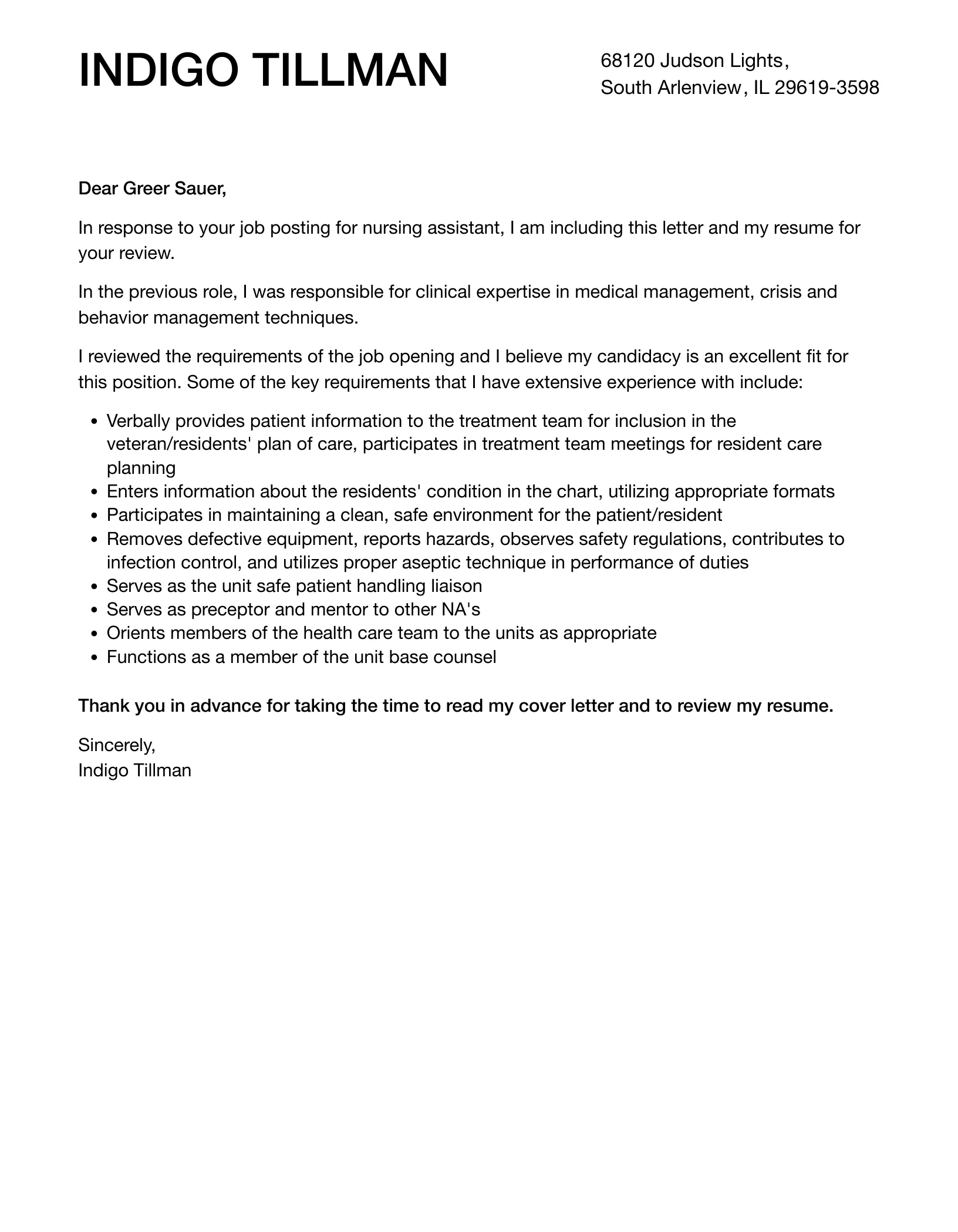
In a competitive job market, a CNA cover letter gives you an edge. It’s an opportunity to personalize your application and demonstrate your unique value proposition. Employers value candidates who take the time to create a tailored letter, showing they are genuinely interested in the role and the organization. A well-written cover letter sets you apart from other applicants, especially those who may have similar qualifications on paper. It offers a space to elaborate on experiences, connect your skills to the specific job requirements, and express your enthusiasm for the opportunity. This is particularly vital in the healthcare industry, where empathy and communication are key.
Highlighting Key Skills and Experience
Your CNA cover letter should effectively highlight your key skills and experience. Focus on the qualities that make you a strong candidate. Consider the specific needs of the healthcare facility and tailor your letter to meet those needs. For instance, if the job description emphasizes patient care, highlight your experience in assisting with daily living activities, providing emotional support, and monitoring vital signs. If the position requires experience with specific medical equipment or patient populations, be sure to mention these experiences. Always provide specific examples to illustrate your claims and demonstrate your abilities to potential employers. Emphasize your certifications and any specialized training that sets you apart.
Key Components of a CNA Cover Letter
A well-structured CNA cover letter follows a standard format, ensuring clarity and professionalism. Each component plays a crucial role in conveying your qualifications and enthusiasm. Understanding these elements is key to crafting a letter that captures the attention of hiring managers and leaves a lasting positive impression. Following a clear format helps employers easily assess your suitability for the position and increases the chances of your application moving forward in the hiring process.
Contact Information and Date
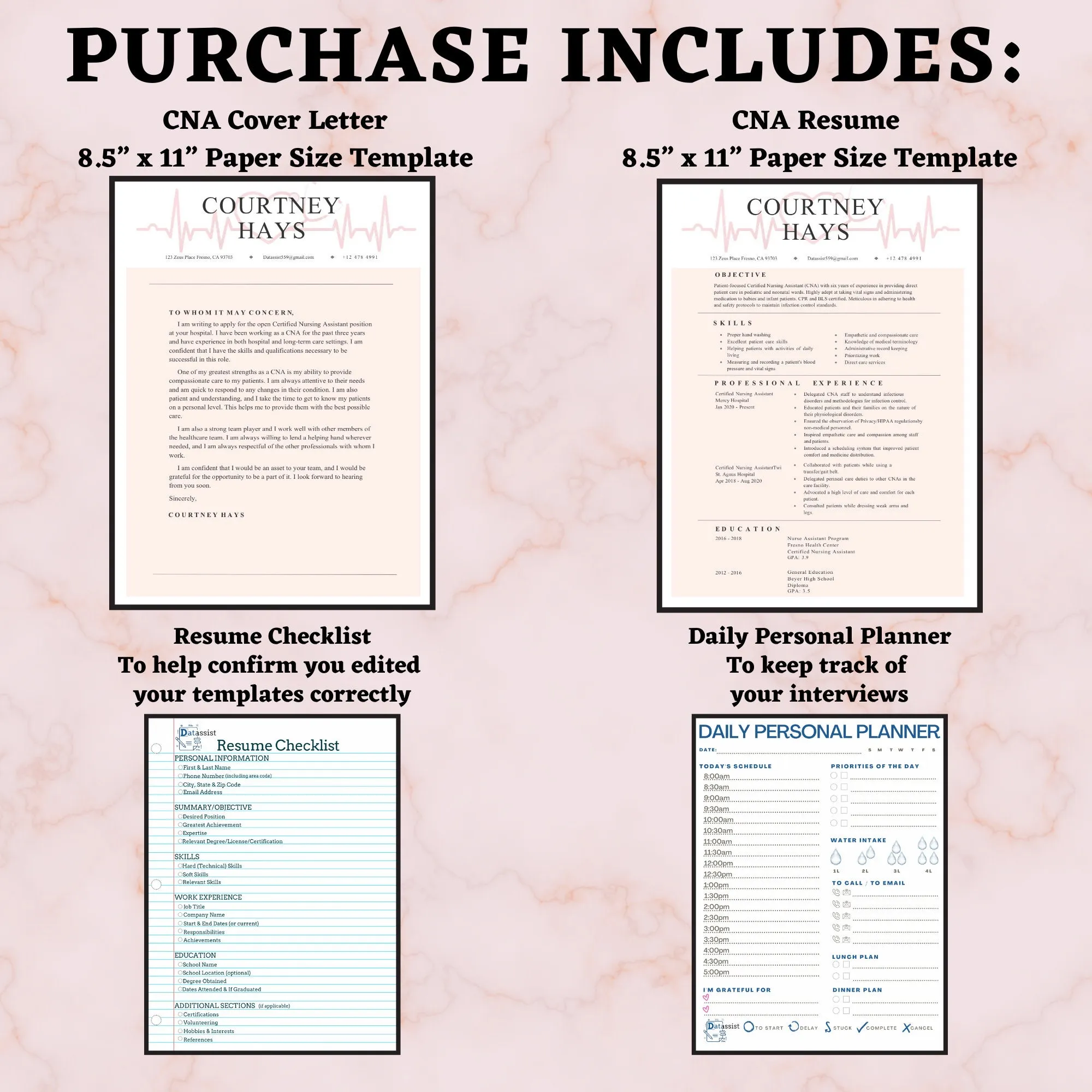
At the top of your cover letter, include your contact information: your full name, address, phone number, and professional email address. This makes it easy for the employer to reach you. Also, include the date the letter is written. The date should be aligned to the left or right, typically under your contact information. Make sure the contact information is current and accurate, as this is how the hiring manager will contact you. Accuracy is key when communicating important details, especially when applying for a healthcare position, so double-check all the information for precision.
The Salutation
The salutation is your opening greeting. Use a professional tone. If you know the hiring manager’s name, use it. For example, “Dear Mr./Ms. [Last Name].” This demonstrates that you’ve done your research and are taking a personal approach. If you do not know the hiring manager’s name, use a general greeting, such as “Dear Hiring Manager.” Avoid generic salutations like “To Whom It May Concern,” as they lack a personal touch. The salutation sets the tone for the entire letter and contributes to the overall impression of professionalism.
Opening Paragraph
The opening paragraph grabs the reader’s attention. State the purpose of your letter: which position you are applying for and where you saw the job posting. Briefly mention your key qualifications and your interest in the facility. Show your enthusiasm. For example, “I am writing to express my interest in the Certified Nursing Assistant position at [Facility Name], as advertised on [Platform]. With my [number] years of experience in providing compassionate care and my [certification], I am confident I can make a significant contribution to your team.” Your opening paragraph should be direct and engaging to entice the reader to continue.
Body Paragraphs: Showcasing Your Skills
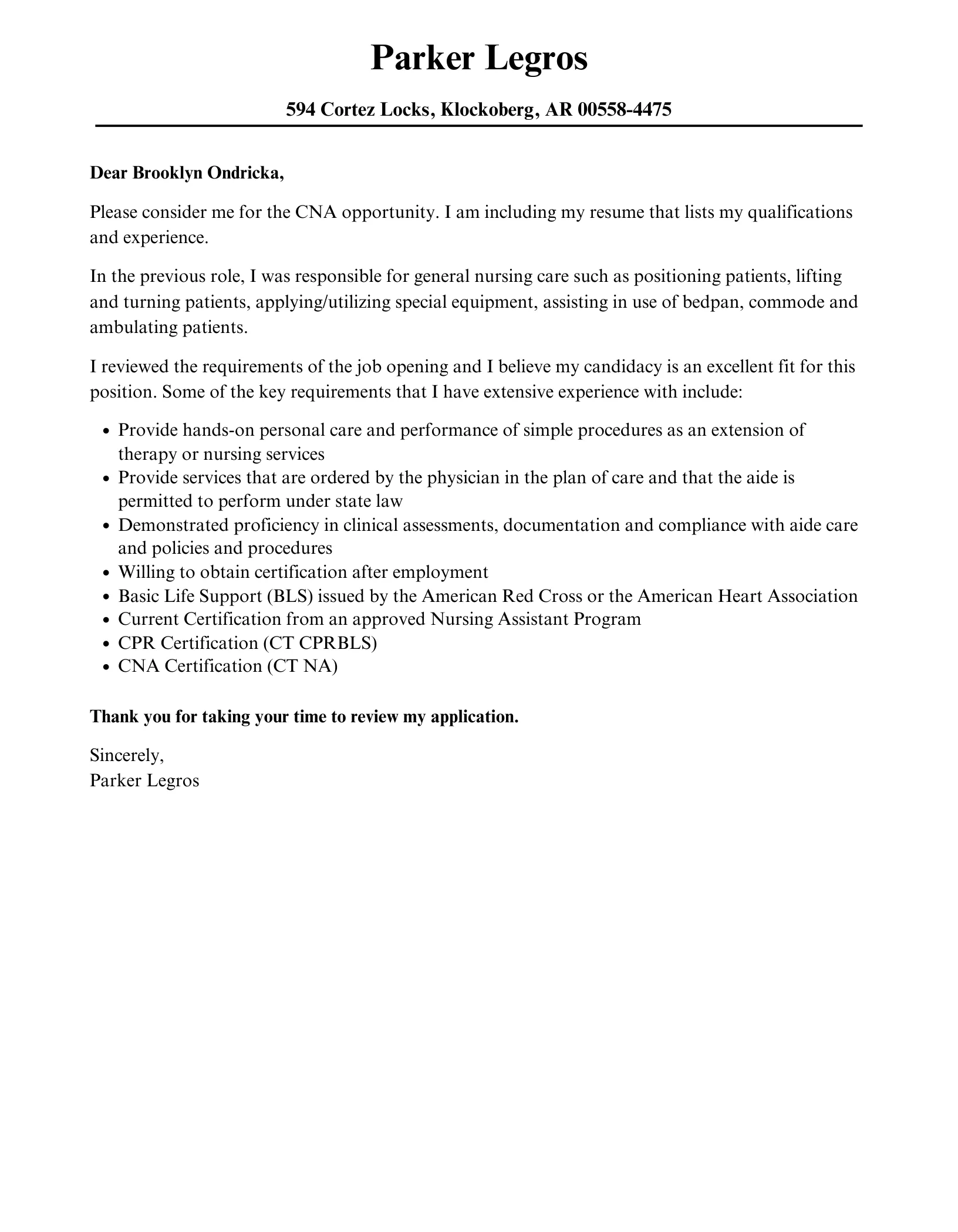
The body of your letter is where you elaborate on your qualifications and skills. Use one or two paragraphs to highlight your most relevant experiences and skills. Connect your skills to the job requirements outlined in the job description. Provide specific examples of how you’ve demonstrated these skills in previous roles. The most effective cover letters use a “STAR” method (Situation, Task, Action, Result) to illustrate your experience. Explain the situation, the task you were assigned, the actions you took, and the positive results. This method gives concrete examples of your skills, making your letter more impactful and memorable. Make sure you tailor the details to align with the specific job’s needs and demands.
Mentioning Certifications
Include all certifications relevant to the CNA position. Mention your CNA certification and any additional certifications, such as CPR, First Aid, or specialized training in areas like dementia care or wound care. Include the name of the certifying organization and the date of certification or renewal. For example, “I am a certified Nursing Assistant through the [Certifying Organization], and my certification is current.” Highlighting your certifications assures the hiring manager that you meet the basic requirements for the job. Be sure to keep all certifications up-to-date and have the necessary documentation readily available.
Highlighting Relevant Experience
Focus on the most relevant experience for the CNA position. Describe the healthcare facilities you’ve worked in, and the types of patients you’ve cared for. Specify the tasks you performed, such as assisting with activities of daily living (ADLs), taking vital signs, administering medications, and providing emotional support. Use action verbs to describe your responsibilities: “Assisted patients with mobility,” “Monitored vital signs,” “Provided emotional support.” Show how you have interacted with patients, their families, and other healthcare professionals. Be clear and concise to create a strong impression of your abilities and contributions to patient care.
Quantifying Achievements
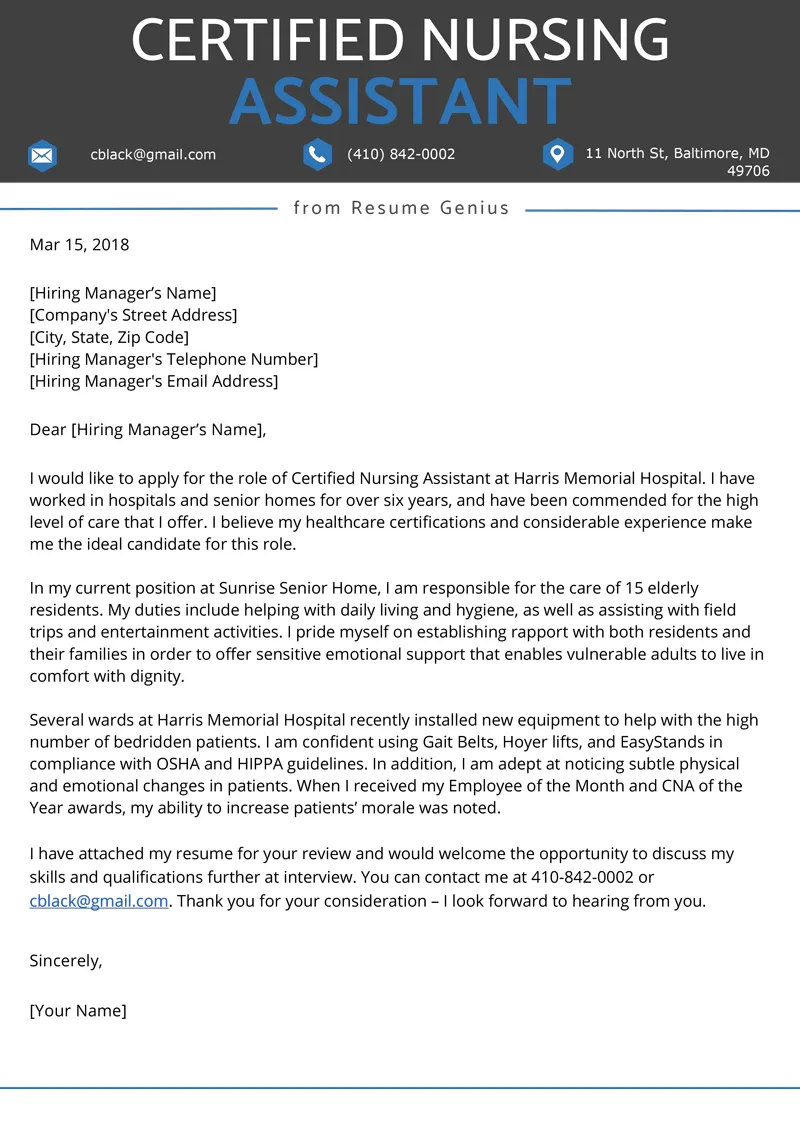
Quantify your achievements whenever possible. Instead of saying you provided “excellent care,” say you “maintained a 98% patient satisfaction rate” or “reduced patient falls by 15%.” Use numbers and statistics to demonstrate your impact. Showing concrete achievements makes your letter more persuasive and demonstrates the value you bring to the position. For example, “Implemented a new patient care plan that resulted in a 10% decrease in medication errors.” The more data you can provide, the more credible and convincing your claims will be.
Closing Paragraph
In your closing paragraph, express your enthusiasm for the opportunity. Reiterate your interest in the position and your belief that you are a good fit for the facility. Briefly summarize your key qualifications, reminding the reader of your strengths. Include a call to action, stating that you are available for an interview and eager to discuss your qualifications further. For instance, “I am excited about the opportunity to contribute to [Facility Name] and would welcome the chance to discuss my qualifications in an interview. Thank you for your time and consideration.” End on a positive and confident note.
The Closing and Signature
Use a professional closing, such as “Sincerely,” “Respectfully,” or “Thank you for your consideration.” Leave space for your handwritten signature, which should be above your typed name. If you are submitting an electronic application, you can type your name instead of signing it by hand. Ensure the closing is aligned with the rest of the document. Make sure the tone is professional and appreciative. This is the final impression you’ll make on the reader, so make sure it’s a positive one.
Formatting and Style
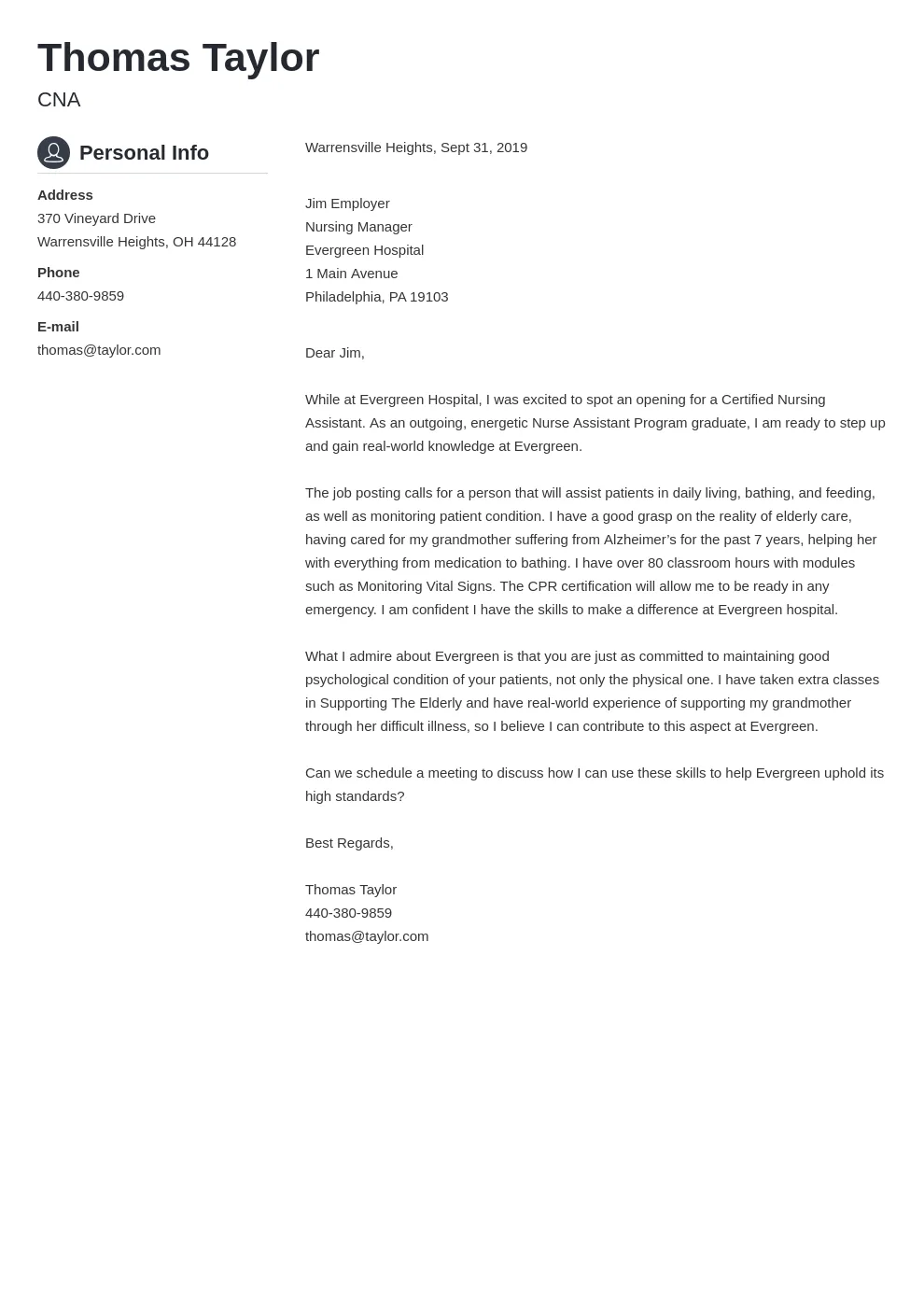
Professional formatting and a clear writing style are critical to making a positive impression. A well-formatted cover letter is easy to read and demonstrates your attention to detail, which is essential in healthcare. Use the right font and layout to ensure your letter is visually appealing and effectively communicates your message. These details are important for leaving a good impression.
Font and Layout
Choose a professional font, such as Times New Roman, Arial, or Calibri, with a font size between 10 and 12 points. Maintain a consistent font throughout the letter. Use single spacing within paragraphs and a double space between paragraphs. Use standard 1-inch margins on all sides of the page. Align your text to the left, avoiding full justification. Keep your cover letter concise, ideally no more than one page long. A clean, well-organized format makes your cover letter easy to read and professional.
Proofreading and Editing
Thorough proofreading is crucial. Always proofread your cover letter for any typos, grammatical errors, and inconsistencies. Use a grammar checker and spell checker. Read the letter aloud to catch any awkward phrasing or unclear sentences. Ask a friend or family member to review your letter for any mistakes or areas for improvement. A flawless cover letter demonstrates your attention to detail, which is very important for a CNA. Ensure your writing is clear, concise, and easy to understand to make the best possible impression.
Tailoring Your Cover Letter
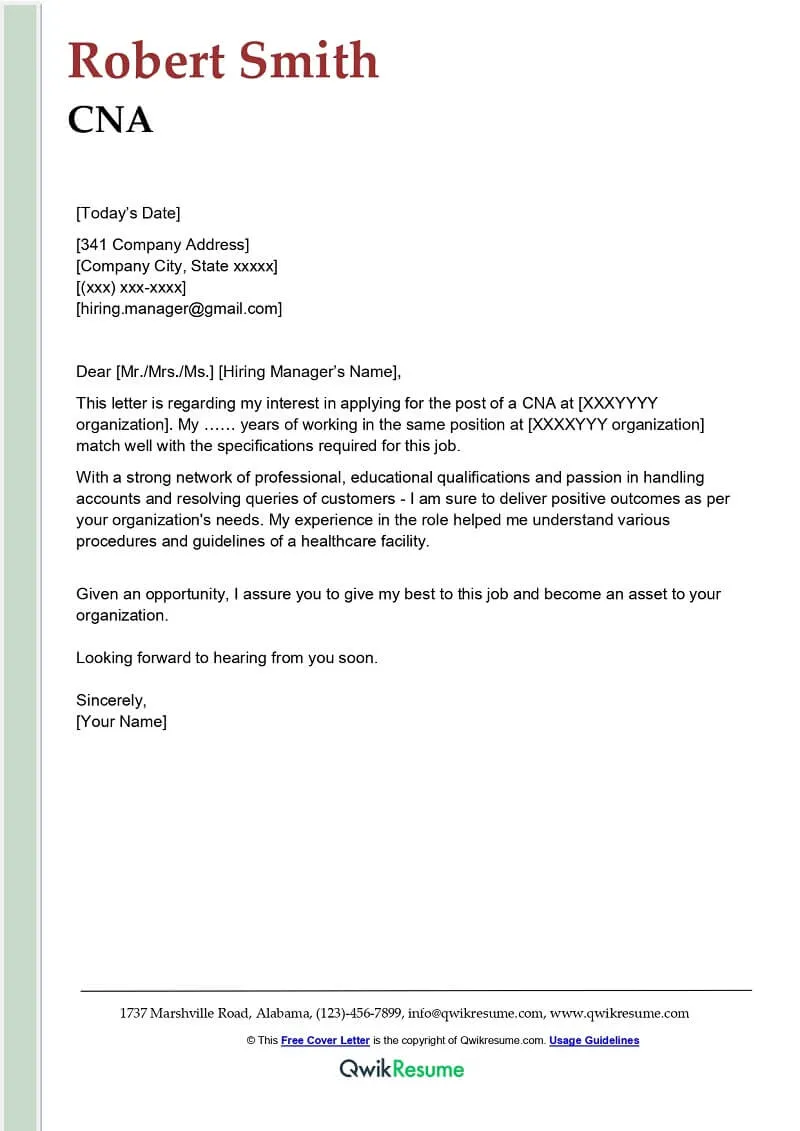
Customize each cover letter for the specific job you are applying for. Generic letters are easily recognized and often discarded. Tailoring your letter shows that you have taken the time to understand the specific requirements of the position and the needs of the facility. This personalization increases your chances of being noticed and selected for an interview. Adapting your letter takes additional effort, but the rewards are worth it, since the application will be more memorable and relevant to the employer.
Researching the Employer
Research the healthcare facility before writing your cover letter. Visit their website, read their mission statement, and learn about their values and services. If possible, research the specific department or unit you are applying to. Understanding the facility’s culture and priorities enables you to tailor your letter and highlight the skills and experiences most relevant to their needs. Mentioning specific aspects of the facility that interest you demonstrates your genuine interest and attention to detail, which can improve your application.
Customizing the Letter for Each Job
Carefully review the job description and identify the key requirements and skills. Use the keywords from the job description in your cover letter. Highlight the relevant experience and skills that align with the employer’s needs. Provide specific examples of how you’ve demonstrated those skills in previous roles. For instance, if the job description emphasizes teamwork, describe a time you collaborated with a healthcare team to achieve a specific goal. Customizing your cover letter shows that you meet the requirements and helps you stand out from other applicants. Make sure your resume and cover letter complement each other to present a cohesive and compelling application package.
Common Mistakes to Avoid
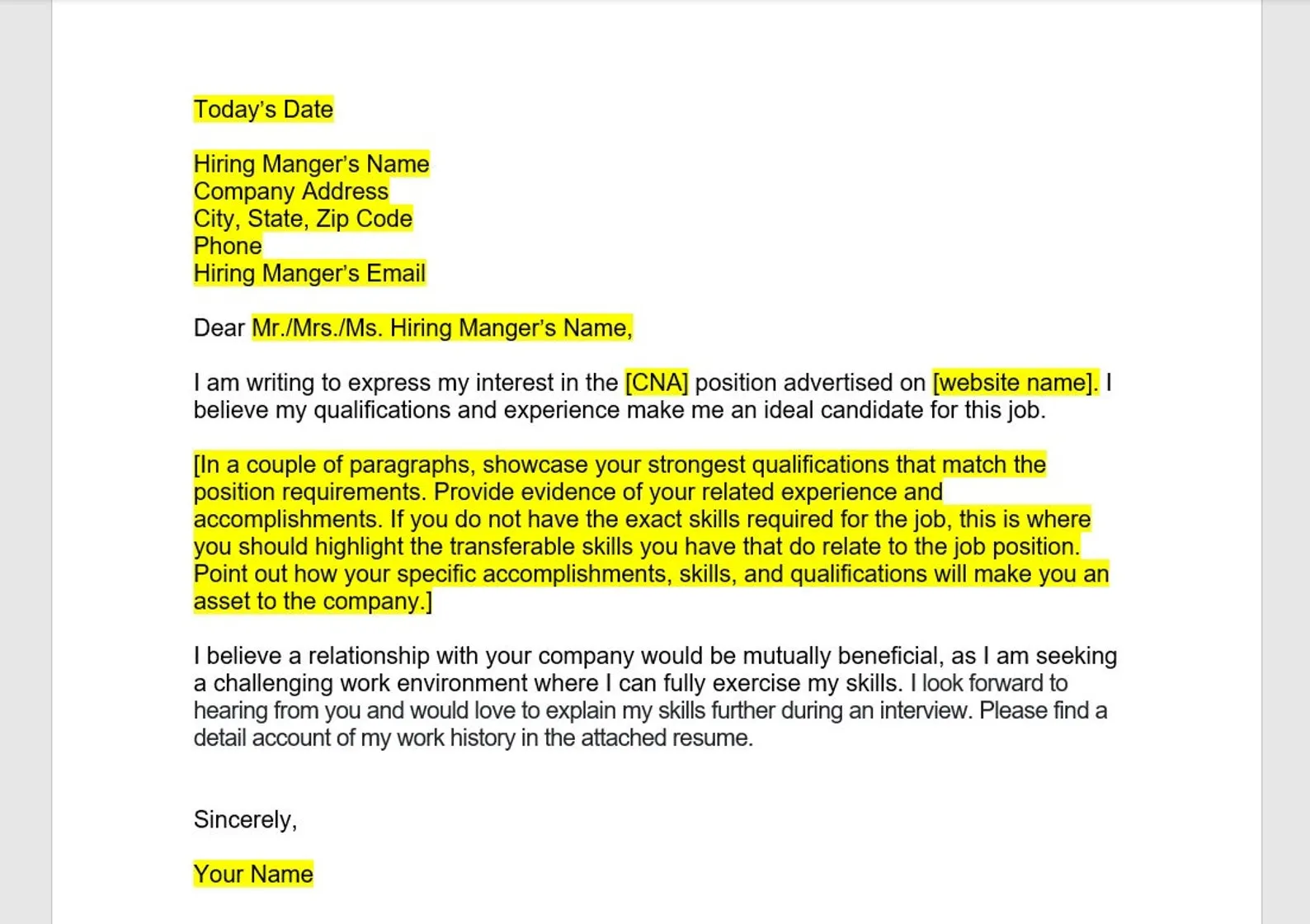
Avoiding common mistakes can significantly increase your chances of success. Many applicants make easily avoidable errors that undermine their applications. Take the time to review your letter and avoid the following pitfalls. These mistakes can create negative impressions and decrease the likelihood of landing an interview. Attention to detail is essential in healthcare, and correcting common errors demonstrates your professionalism and care.
Generic Letters
Avoid using generic cover letters. These letters are not tailored to the specific job or the employer. They lack personalization and fail to demonstrate your genuine interest. Generic letters often miss mentioning key qualifications and experiences that are relevant to the specific position. Hiring managers can recognize generic letters quickly, and they may not take the time to read them thoroughly. Always customize your cover letter to the specific job and the requirements to show the employer that you care about the opportunity.
Typos and Grammatical Errors
Typos and grammatical errors are unacceptable in a professional cover letter. They suggest carelessness and a lack of attention to detail. Such errors can damage your credibility and make a negative impression. Always proofread your letter carefully before submitting it. Use a grammar checker and spell checker, and ask someone to review your letter for any mistakes. Ensuring your letter is free of errors demonstrates your professionalism and commitment to quality, which are critical in the healthcare field.
Lacking Enthusiasm
Express your enthusiasm. A cover letter that lacks enthusiasm will not capture the reader’s interest. Show your passion for the role and your commitment to providing excellent patient care. Use positive language and convey your genuine interest in the facility and the opportunity. Avoid sounding too formal or robotic; let your personality shine through. Showing enthusiasm makes your letter memorable and helps you stand out from other applicants. This is particularly important in the healthcare field, where compassion and dedication are essential attributes.
CNA Cover Letter Template Example
Here is an example template that you can use to create your own cover letter. This template is a starting point, and you should customize it to reflect your specific qualifications and experiences. Remember to replace the bracketed information with your own details. This template is meant to help you create an effective cover letter for your CNA job applications.
Your Name Your Address Your Phone Number Your Email Address
Date
Hiring Manager Name (or “Hiring Manager”) Facility Name Facility Address
Dear Mr./Ms. [Last Name] or Dear Hiring Manager,
I am writing to express my interest in the Certified Nursing Assistant position at [Facility Name], as advertised on [Platform]. With my [number] years of experience in providing compassionate care and my [certification], I am confident I can make a significant contribution to your team.
[Body Paragraph 1: Highlight relevant skills and experience. Mention how you meet the job requirements.]
[Body Paragraph 2: Provide specific examples of achievements and quantify them.]
I am a certified Nursing Assistant through the [Certifying Organization]. I am also certified in [CPR/First Aid/etc.]. I am eager to bring my skills and experience to [Facility Name] and provide excellent care to patients.
I am excited about the opportunity to contribute to [Facility Name] and would welcome the chance to discuss my qualifications in an interview. Thank you for your time and consideration.
Sincerely, [Your Typed Name] [Your Signature]
